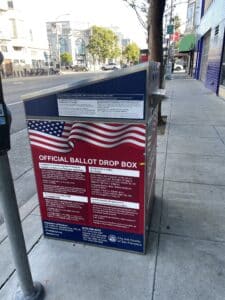
I am a delivery driver for a company that offers door-to- door food service from restaurants to customers’ homes. I am classified as an independent contractor and paid on a piece-meal (no pun intended) basis, with no benefits or extra pay for working overtime. Some people at work say that we should be classified as employees instead and want to demand better employment terms. These legal categories are confusing to me, even though they seem to have a lot of impact on our lives. How can a worker tell whether they should be treated as an independent contractor or an employee? CJ
Hi CJ, Your question is an important one that many workers and businesses struggle with because the appropriate work classification is critical to determining whether a worker is entitled to a number of wage and overtime protections, employer contributions to Social Security and Medicare, as well as reimbursement for business-related expenses. While workers in an “employment relationship” can expect these benefits to be provided by hiring entities, workers classified as independent contractors are generally responsible to bear those burdens themselves.
Since 1989, California courts have determined employment status through analysis of twelve factors originally set forth in an important case known as Borello and Sons v. Dept. of Industrial Relations and later clarified by Yellow Cab Cooperative v. Workers Compensation Appeals Board. This “multi-factor analysis” purported to evaluate whether the hiring entity had “significant control” over the nature, manner, and means of the work to be performed. The more control the hirer enjoyed, the more likely it was that a court would determine an employment, rather than contractual, relationship had been created.
With the rise of the so-called “gig economy,” however in which on-demand businesses occupy diverse fields such as transportation, in-home services, and, as in your case, delivery services, the traditional division between employees and independent contractors has become less and less clear. While a hiring entity may contract with a large number of essentially disconnected “gig” workers, each of whom often uses their own equipment and enjoys some choice in working hours and conditions, the contracted work often serves as a worker’s primary or even singular source of income and may be controlled in many ways by conditions set by the hirer.
Given the substantial changes in California’s labor market since it had established the Borello standard in 1989, California courts have increasingly struggled to fit the traditional factors of employment status for workers into the emerging “gig” workforce model. Most recently, on April 30, the California Supreme Court issued a major decision in a case known as Dynamex Operations West Inc. v. Superior Court to guide how the courts should now determine theemployment status of a worker.
In Dynamex, workers for an on-demand package and document delivery service brought a class-action case challenging their status as independent contractors. Instead of applying the Borello multi-factor test, the Supreme Court opted to establish a new rule to determine the nature of a worker’s relationship with the hiring entity, to be known as the “ABC test.” It is a clearer standard, already used in several other jurisdictions, and is predicted by many legal analysts to favor, when compared to the Borello test, a determination that a worker is indeed an employee as opposed to a contractor.
Under the new “ABC test,” a hiring entity wishing to maintain an independent contractor relationship with a given worker is required to prove each of the following three requirements:
(1) The worker is free from the control and direction of the hirer in the performance of their work;
(2) The worker is performing work that is outside the usual course of the hiring entity’s business; and,
(3) The worker is customarily engaged in an independently established trade occupation or business of the same nature as the work performed.
It will take some time to see how this new standard, as applied by the California courts, will change the employment landscape, but it certainly appears to support the classification of more workers as employees as opposed to independent contractors. For instance, it seems likely that a worker who earns their living primarily or solely from “gig” work for one hiring entity within a set of constraints customary across the hirer’s workforce would have a strong case for classification as an employee and entitlement to the benefits that go along with that status.
I would need many more details to evaluate how the ABC test would apply to your particular situation, but the upshot of the Dynamex case is that an evaluation of such key facts should now be both easier and clearer than under the Borello standard.
If you think you have employment-related legal issues, be sure to contact an attorney experienced in this area of law, such as Dolan Law Firm.










